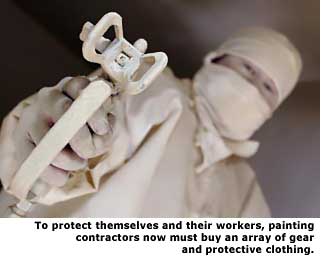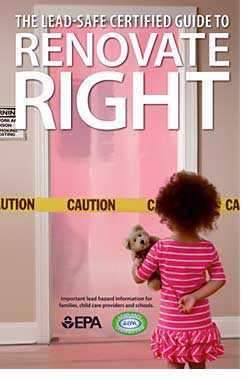Lead-Safe: At What Cost? - Page 2
All told, the new laws add significant costs. Remodelers estimate that the additional costs associated with the lead-safe work practices average about $2,400, but they vary according to the size and type of job, according to the National Association of Home Builders. For example, a complete window replacement requires the contractor to install thick vinyl sheeting to surround the work area both inside the home and outside. Prep time and material costs can add an estimated $60 to $170 for each window.
"Not counting my upfront costs, it probably costs me $150 to $200 in materials and half a day on a job to set everything up, which could be an extra $500 to $600 per job," says Steve Shinn, owner of Homework Remodels in Phoenix, Arizona, who specializes in older-home projects.
Palladino estimates that observing the new law adds up to 20-percent price increase to each of his painting jobs. However, adds another California contractor, "I don't think that an additional 20 percent is actually capturing all of the costs. You also have to consider your manpower."
Contractors say a lot of building professionals don't know about the new regulations, and therefore homeowners aren't finding out about it either. "The EPA hasn't been in touch with anyone directly," Shinn says. "I found out about it through the trade journals." The eight Northern California contractors contacted for this report each claim to have not received any official notice from the EPA.
The EPA, however, says it has taken measures to inform the public. "We sent personal notice of the new regulation to every contractor in California, Arizona, Nevada, and Hawaii, and to every lead abatement firm in those four states," says Nancy Oien, regional lead coordinator for the EPA's Toxics Office.
"We had the California State Contractors Licensing Board publish articles twice in both their industry bulletin and quarterly newsletter sent to their 250,000 contractors."

It is unclear who will do the real policing of the RRP. The EPA has acknowledged that it doesn't have enough resources to fully monitor compliance, and it is authorizing states, tribes, and territories to administer and enforce the rule. So far, the EPA has delegated authority to implement the RRP to Wisconsin, Iowa, North Carolina, Utah, Mississippi, Kansas, Rhode Island, Oregon, and Massachusetts, each one a state where responsibility will fall to state officials. In other states, the EPA says it will assume responsibility. The agency has indicated that it will follow up on reports of noncompliance, and has even established a lead hotline for anonymous tipsters.
"We are taking tips and complaints from the public, and either investigating them ourselves or referring callers to their local enforcement office," Oien says. The EPA is also targeting inspections of renovation firms and conducting inspections themselves, most recently in Los Angeles.
"It's really quite scary to me, because it's extremely difficult to sell jobs right now in an economy where people have less money to spend," says one California contractor who hasn't yet completed the EPA certifications. "There's no question that the environmental concerns need to be addressed, but what happens when neighbors start reporting you?"
The EPA says it will begin enforcing the rule in October 2010, and renovators must complete the training and certification before January 1, 2011. There are a few exceptions to the regulations. The EPA will not police minor repairs that disturb less than six square feet, or exterior work that disturbs less than 20 square feet. Nor will they inspect houses that test lead-free by a Certified Risk Assessor, Lead Inspector, or Certified Renovator. Also, property owners who perform renovation, repair, and painting work themselves will not be required to follow the EPA guidelines.
Two industry associations, the National Association of Home Builders and the National Association of the Remodeling Industry, have been lobbying to get the RRP dates pushed back to provide more time for remodelers and contractors to get the necessary training and documentation.

An important component of the original law was something called an 'Owner-occupant Opt-out Acknowledgment.' The opt-out provision took into account that if no child under the age of six or a pregnant woman reside in the structure, and if the property is not a 'child-occupied' facility (such as a day care or a school), then the building owner could allow the professional contractor to forgo using the lead-safe work practices.
In a surprise move, the EPA removed the opt-out provision in May 2010. For contractors, that means the RRP rule needs to be followed on every job where lead paint could possibly exist or the professionals would open themselves up to fines or possibly jail time.




